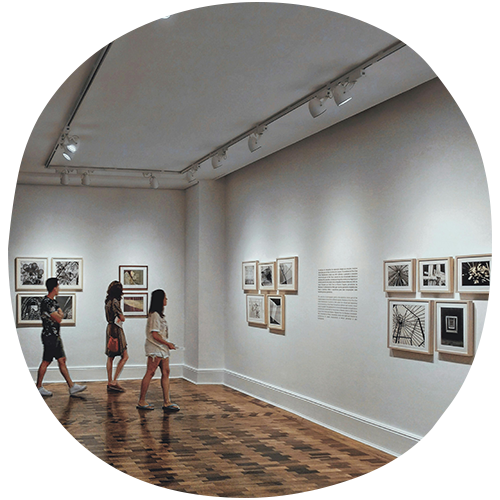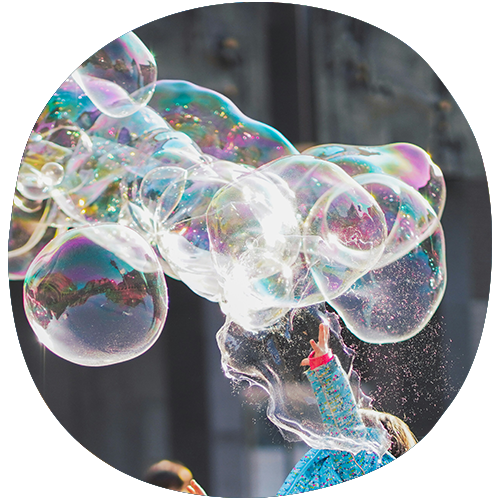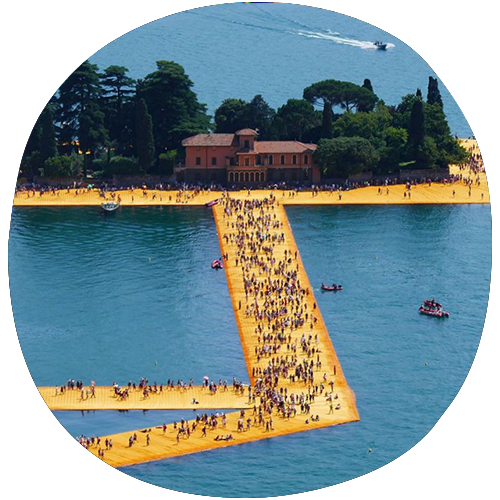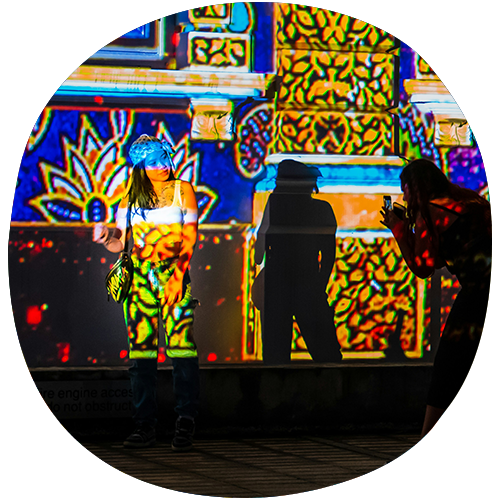What is our places of importance?
We walk through our campus every day, we drink pints on pints at Royal Park Pub every Tuesday, and we buy toasted focaccia sandwiches from Bakery 164. We turn these spaces into our places every time we walk past, building our spatial connections and rooting ourselves into the local community of Hyde Park and Leeds city centre but how much do we actually know about these places?
Our Places of Importance (OPOI) is an interactive website that aims to deepen University of Leeds students’ connection with their surrounding areas. We do this by providing facts and archival imagery of places that students have pre-existing emotional ties to such as Hyde Park Picture House and Brudenell Social Club.
Leeds is more than just a university city! Using ideas of placemaking, community experiences, and history, explore its vibrant culture and history using our 3D models.
Our research was solely conducted with University of Leeds students, therefore they have been mentioned as our audience but we invite all Leeds students and residents to get involved.
What are placemaking practices?
Space: A physical location or area.
Place: A space that goes beyond just physicality; it's a space that holds personal or cultural significance through the meaning we attach to it.
Placemaking has its roots in urban planning as a participatory approach to designing and utilising public spaces often with the input of the local community. Whilst placemaking centres around physical spaces and practices, digital placemaking can be seen as the online equivalent blending the virtual and physical.
Heavily inspired by the idea of the playable city, Our Places of Importance makes Leeds more “playable” and “interactive” through our game-like interactions with 3D models of student hotspots in Leeds. We hope you leave with a different perspective and a deeper understanding of the places around you. Happy playing!
Our favourite placemaking projects

Camden People's Museum
The Camden People's Museum is an interactive free virtual museum that can be accessed by anyone online. It showcases a digital collection of paintings, photography, graffiti and more all based in the London Borough of Camden. It's a great way for locals to connect with their surrounding community online.

Reveal
REVEAL was a 2018 active reality project in King’s Lynn Town Centre, Norfolk England. It was an experimental fusion of live theatre, online storytelling, and augmented reality, weaving the journey of a Syrian refugee into the fabric of the physical town. With dynamic projections and a smartphone-enabled treasure hunt, it engaged audiences in an immersive exploration of history, geography, and empathy.

Playful Anywhere
Playful Anywhere, a Leeds-based social enterprise founded by Emma Bearman in 2012, fosters creativity and playfulness in everyday life. Through collaborative efforts, they deliver innovative events and programs, seamlessly blending physical and digital. With a focus on inclusivity and fun, they cultivate meaningful experiences for diverse audiences across Leeds.

The Floating Piers
For sixteen days in 2016, Italy's Lake Iseo transformed into an otherworldly spectacle with The Floating Piers. Designed by Christo and his team, this free and open-to-all art installation comprised shimmering yellow fabric pathways spanning the lake's surface. Visitors wandered across, experiencing the ethereal sensation of walking on water amid breathtaking natural scenery.

Leeds Light Night Festival
Leeds Light Night, an annual spectacle, illuminates the city with vibrant displays, performances, and installations. Drawing crowds from all corners, the streets buzz with energy as locals and visitors alike walk through, feeling the city come to life. It's a beloved tradition, eagerly anticipated and celebrated throughout Leeds.

Playable City
Playable City invites people to engage with public spaces through creative technology installations, sparking conversations about urban development and inclusivity. With a decade of global reach and collaboration, their vision emphasises the democratisation of play and the revitalisation of civic spaces, aiming to bring joy and dialogue to communities worldwide.
How our places of importance was made
We encourage students from other cities to conduct their own placemaking activities. Feel free to copy what OPOI has done. Here’s how we did it.
1. Chose our places of importance
We conducted a survey with 198 students from the University of Leeds to discover what were their places of importance. We then organised the data to understand which places were the most popular. While 4 out of the top 5 places were drinking spots, we decided to choose places that were slightly different in category.
Currently, these are our places:
Hyde Park Picture House - Cinema
Brudenell Social Club - Bar and Live Music Venue
2. Conducted research
We then conducted in-depth research to uncover the history, fun facts, and old images of these spots. This included reaching out to the locations themselves and retro image archives.
If you’re struggling to find old images, reach out to local newspapers. Local newspapers are likely to keep an archive of images. Additionally, consult local libraries.
3. Created content for the site
Once we had done all of our research and image gathering, we then needed to organise all the information into digestible sections to accompany the 3D model.
This included reaching out to the locations to take photographs of their spaces. We took a mixture of general and cross-referenced images to compare the old archival images we found to their buildings today.
4. Designed the 3D models
When we went to locations to take photos, we also planned out what section of the buildings we wanted to convert into 3D models. We then created these in Blender. If you want to save some time, there are many open-source pre-existing 3D isometric Blender rooms that can be downloaded and used. Alternatively, you could also use AI to create these, bear in mind that AI renders won’t be interactive.
Blender has a pretty steep learning curve but here are some tutorials that we found useful:
- Blender Controls, Hotkeys, and Tips! | Blender 3.1 Tutorial
A must watch to get used to the controls and keyboard shortcuts. - Eevee Lighting Tutorial - learn to shape light like a PRO [Blender 3.2]
Lighting really makes or break a render, take the time to watch how to make the most of lighting. - Learn Blender 3D in 20 Minutes! Blender Tutorial for Absolute Beginners (2023)
Can be useful to watch if you're slightly nervous about starting your model otherwise get stuck in with a practice file. - Isometric 3D Room in Blender 3.5 | Beginner Tutorial
A slightly more complex 3D isometric room model than the above. Use as reference for a more complex room. - Blender 3D - Create a 3D Isometric BEDROOM in 15 minutes | Beginner Tutorial
I stress the importance of creating a practice blender containing a simple model. This is a great resource for that.
5. Coded the website
We used a mixture of HTML, CSS, and JavaScript to code this website. We then used a mixture of node.js and Three.js to embed the 3D models.
If you have no experience in coding websites, we encourage you to first follow this Code Academy Build a Website with HTML, CSS, and GitHub Pages course. If you want a free course, Code Academy also provide free courses.
To download our website files click here.
6. Uploaded our 3D models to Sketchfab
We used Sketchfab to host the models of our places on the website and make them interactive. To do so, we exported the files as a GLTF document which stores our models in 3D. We then uploaded these to Sketchfab and used viewer API to make it interactive so that when you click on objects in the scene, different facts pop up. If you don't have a lot of experience with JavaScript or don't mind the experience not being so embedded with your site, attaching facts through Sketchfab's annotations feature is a much easier process.